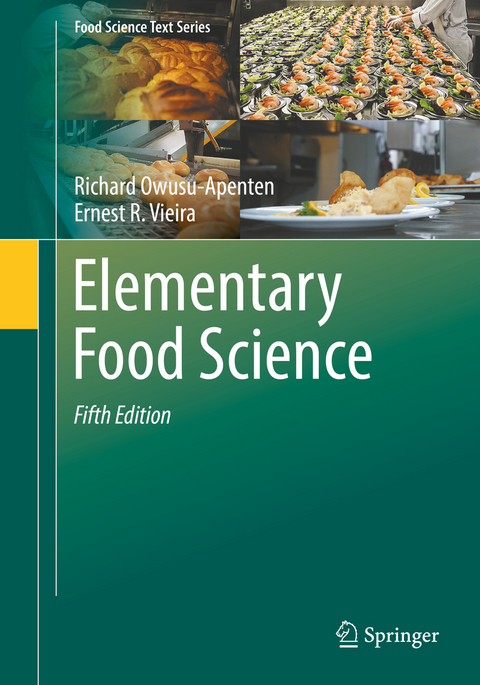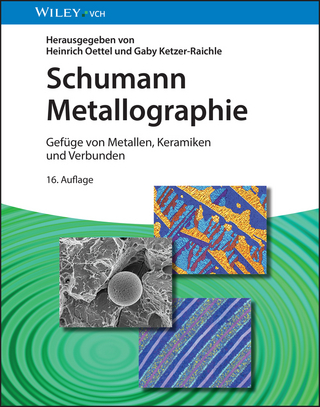
Elementary Food Science
Springer International Publishing (Verlag)
978-3-030-65431-3 (ISBN)
Part (1) — Interrelated food science topics: The opening two chapters discuss what food science actually is, the significanceforsociety, and the large contribution of the food industry to jobs and revenue in the USA and globally. Succeeding chapterscover food regulatory agencies, food labels, food quality and sensory evaluation, and consumer food literacy.
Part (2) — Food safety & sanitation: The second part has two new chapters explaininghow microbes affect food quality,and alsofoodborne disease outbreaks; GMP is described independently and as a prerequisite for HACCP, VACCP andTACCPfood-safety management systems.
Part (3) — Food preservation and processing: This part contains two new chapters dealing with basic aspects of food processing, and the quality of dried foods.
Part (4) — Handling & processing of foods: The last chapter covers handling and processing major food commodity groups (meat, dairy products, poultry and eggs, fish and shellfish, cereal grains, bakery products, fruits and vegetables, sugar confectionary). A new final chapter coversthe foodservice industry.
The text highlights food science links with industry uniquelyusing the North American Industry Classification System (NAICS). Overall, the book is thoroughly modernized with over 1500 references cited in recognition of thousands of named food scientists and other professionals.
The target readership remain unchanged for the current edition, i.e. Students of food science fromsenior high school, colleges or universities. Sections of the book will also appeal toadvanced readers from other disciplines with perhaps little or noprior food science experience. Additionally, readers covering the intersection of food science with culinary arts, foodservices, and nutritionor public health will find the book useful.
Professor (Emeritus) Ernest R. Vieira was Chair of the Department of Food Science, Nutrition and Culinary Arts, Essex Agricultural and Technical Institute, Hathorne, Massachusetts, USA.
Dr. Richard Owusu-Apenten is an Independent Food Scientist Researcher and former faculty at the Department of Food Science, Pennsylvania State University (USA), Department of Food Science & Nutrition, The University of Leeds (UK), and the School of Biomedical Sciences, Ulster University, Coleraine (UK).
1 Why food science
2 Food-largest of all industries
3 Food regulatory agencies
4 Food labels
5 Quality and sensory evaluation of food
6 Consumer food literacy
7 Food microbes, quality and fermentation
8 Microbial foodborne disease outbreaks
9 Food safety and sanitation
10 Food safety management, GMP & HACCP
11 Basic considerations for food processing
12 Thermal processing and canning
13 Low-temperature preservation
14 Food drying
15 Quality of dried foods
16 Food additives
17 Meat
18 Dairy products
19 Poultry and eggs
20 Fish and shellfish
21 Cereal grains
22 Bakery products
23 Fruits and vegetables
24 Sugar and confectionery products
25 Food Services
| Erscheinungsdatum | 29.03.2021 |
|---|---|
| Reihe/Serie | Food Science Text Series |
| Zusatzinfo | 105 illus. |
| Verlagsort | Cham |
| Sprache | englisch |
| Maße | 178 x 254 mm |
| Gewicht | 1173 g |
| Themenwelt | Naturwissenschaften ► Chemie |
| Technik ► Lebensmitteltechnologie | |
| Schlagworte | food-centric culinary art • Food Safety • foodservices • Nutrition • Public health issues |
| ISBN-10 | 3-030-65431-1 / 3030654311 |
| ISBN-13 | 978-3-030-65431-3 / 9783030654313 |
| Zustand | Neuware |
| Informationen gemäß Produktsicherheitsverordnung (GPSR) | |
| Haben Sie eine Frage zum Produkt? |
aus dem Bereich


